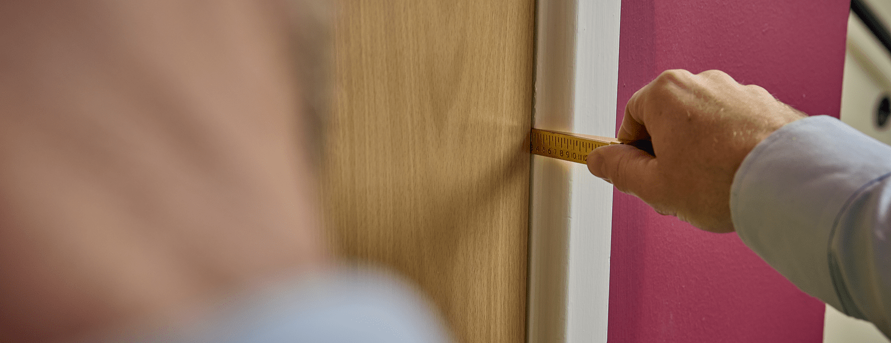Maintaining fire doors is crucial for ensuring they function as intended in the event of a fire. Regular maintenance checks are necessary to ensure the door and its components, such as intumescent strips and self-closing devices, are in working order.
How often should fire doors be checked?
It's critical that fire doors are regularly and consistently maintained, as failure to do so can lead to inadequate protection or significant losses during a fire. Regular checks are essential to confirm that fire doors are operating as intended. Ineffective fire doors not only endanger lives and property but are also in breach of fire safety regulations.
The responsible individual must confirm that a thorough fire risk assessment has been completed which involves a review of the condition of the fire door. Consistent inspections are necessary to inform the responsible person about any apparent damage to door frames or assemblies, the absence of essential components like intumescent seals, or incorrectly installed doors.
How to maintain a fire door:
- Certification: Fire doors should be third-party certified by an independent testing body, such as the BMTrada or IFC. This should cover the overall doorset, such as the ironmongery, door hardware and door furniture which all make up the doorset and help ensure it functions properly. All of our fire door works are certified through third party accreditation under IFC or BM TRADA Q-Mark Fire Door Installation/Maintenance scheme.
- Check for Gaps: Ensure there are no significant gaps around the edges and between the door and the frame. The gap should generally not exceed 3mm, as larger gaps can allow smoke and fire to pass through.
- Inspect Seals: Check the integrity of intumescent seals and smoke seals. They should not be damaged or missing. These seals expand in the event of a fire to prevent smoke and flames from passing through the door.
- Ensure Proper Closure: Test the self-closing mechanism to ensure the door fully closes by itself from any position. Adjust or replace the self-closing device if the door does not close properly.
- Check Hinges and Hardware: Inspect hinges, locks, latches, and any other hardware for signs of damage or loose fittings. Securely tighten any loose components and replace any parts that are damaged or not functioning correctly.
- Maintain Door Leaf and Frame: Look for any damage to the door leaf or frame, such as warping, cracks, or splits. Repair or replace any components that compromise the door's integrity.
Fire door legislation
Article 17 of the Regulatory Reform (Fire Safety) Order 2005 makes it a legal requirement to ensure that fire resisting doors are correctly installed and adequately maintained so they are fit for purpose. The responsible person for non-domestic buildings must ensure fire doors and frames are correctly installed so they can effectively prevent the spread of fire. The integrity of a fire door is also affected by its hardware (e.g. hinges, self-closing device, handles/locks), so regular maintenance of these elements is crucial.
Compliance
We are committed to ensuring full building compliance. All of our fire door works are certified through third party accreditation under IFC or BM TRADA Q-Mark Fire Door Installation/Maintenance scheme.
Contact Fusion Services Today About Fire Door Maintenance!
If you’re looking for professional fire door installation and/or maintenance, or would like more information on any of our passive fire protection services, please get in touch today.

